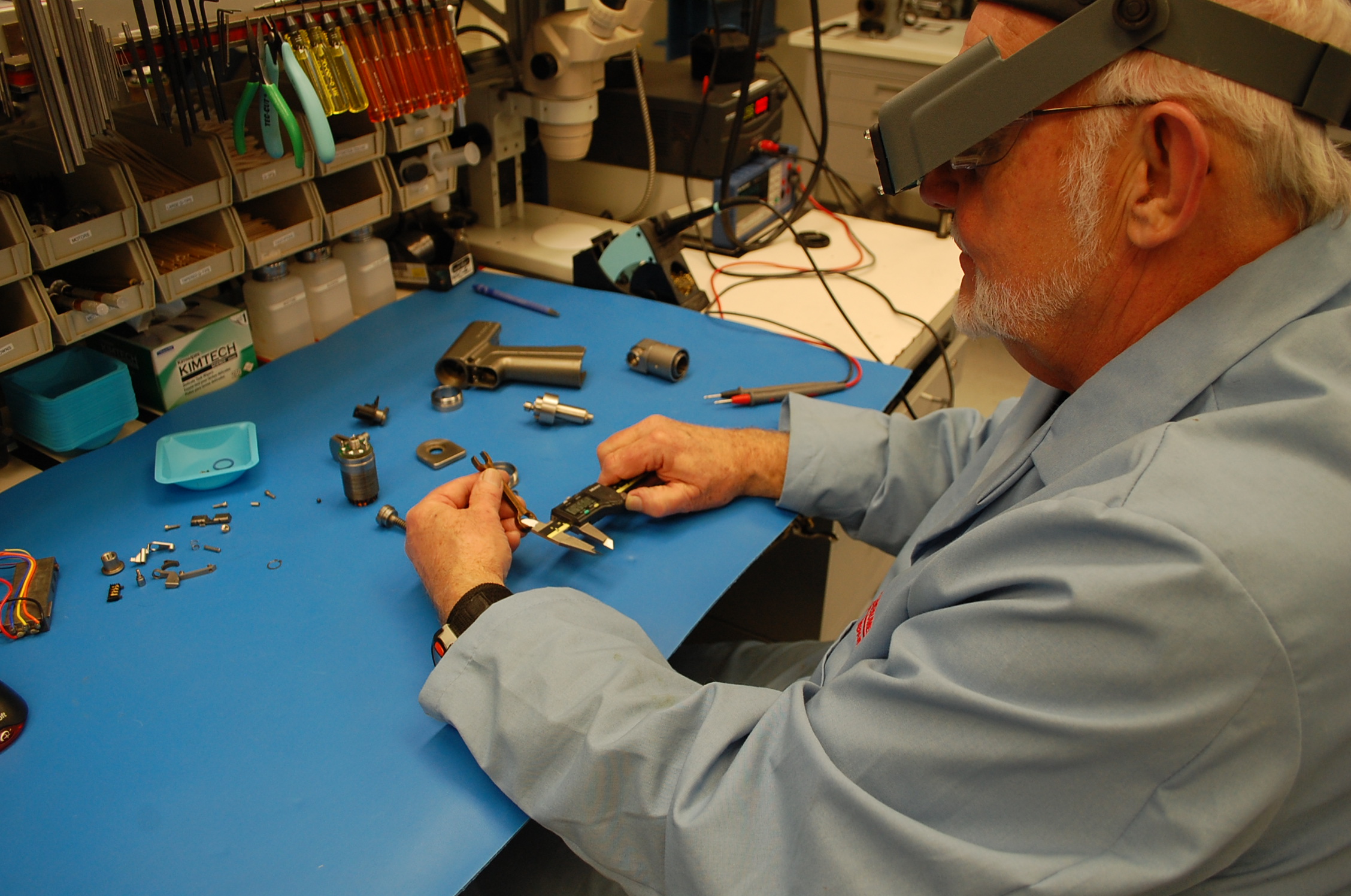
Right to Repair is a simple way to cut health care costs
Cost containment is is a critical first step in addressing the deep faults in our health care system - it's hard to image fixing problems of access if we continue to be charged $15 for a Tylenol pill or $1,000 for a toothbrush. It turns out that overpriced equipment repair helps add to those inflated costs.

Medical Device Repair, Credit Gary Fansler, Association of Medical Device Service Organizations
Cost containment is is a critical first step in addressing the deep faults in our health care system — it’s hard to image fixing problems of access if we continue to be charged $15 for a Tylenol pill or $1,000 for a toothbrush.
It turns out that overpriced equipment repair helps add to those inflated costs.
Hospitals account for more than $1 trillion in American health care costs each year, about one third of our total health care spending. Overall, Americans spend more than twice what other wealthy countries pay for our health care, and get worse results. Finding ways to cut costs is essential — especially if those methods don’t negatively impact the quality of care.
U.S. PIRG has long advocated for new tools to drive down those costs by pushing for price transparency, drug pricing reforms, and reducing administrative overhead allowances for insurers. We see Right to Repair as a simple way that hospitals can reduce overhead — and a growing body of research demonstrates that it would not reduce the quality of care in any way.
A monopoly on repair drives up hospital costs
The equipment used in hospitals is very pricey. An MRI machine can cost anywhere from $150,000 to about $3 million, and it’s important for hospitals to maintain those machines, and all the other equipment they use.
The original equipment manufacturers (OEMs) of medical equipment typically offer contracted repair services for their equipment, but the price can be steep — between 10 and 15 percent of the original cost of the product.[1] That means if you have a $1 million MRI machine, you would be paying $100,000 — $150,000 in annual service charges. An independent repair provider might cost half of that, in the neighborhood of 5–8 percent. The cost would be even lower for hospitals that have their own in-house repair services, around 3–4 percent. So, repair options could potentially mean $100,000 per year savings on just one machine.
Competition in repairs could cut maintenance costs in half, and the total value of that savings adds up. Maintaining medical equipment is a significant cost for hospitals — tens of billions of dollars nationally per year, according to industry experts.
Unfortunately, many of the OEMs refuse to provide the parts and information needed to properly maintain equipment, allowing them to overcharge for these services. For example, you might not be able to calibrate the MRI machine without technical information about that process, information that the OEMs won’t give out in order to force you to contract repair service with the manufacturer. Because Right to Repair would require OEMs to make parts and tools available at a fair price, and give access to service manuals, diagnostic software and firmware, it would break a monopoly on repair.
Repair options means less equipment downtime
Additionally, the monopoly on repair has consequences beyond high costs. Convenience and timeliness are important factors when it comes managing a hospital. Dealing with machines that are maintained by their manufacturer alone can lead to waiting for specific service agents to come when it fits into their schedule. Limited options for repair leads to longer repair timelines, causing patient backups and other logistical problems, all of which adds to the cost.
Independent repair has proven safe
In most states that have proposed Right to Repair laws, medical device manufacturers and their trade associations have been quick to push back, claiming that non-OEM repair is dangerous. But a growing body of evidence has shown this is simply not backed up by the data.
A recent study found that of 2.1 million device failure reports submitted to the FDA over the past 10 years, only 0.005 percent of failures could be attributed to service or maintenance issues. The failures are from both OEMs and independent repairs. Here is the conclusion of their report:
Based on the results of ECRI Institute’s detailed database searches spanning the past 10 years, and on its monitoring of medical device problems and hazards for more than 40 years, we do not believe that a safety problem exists with the servicing, maintenance, and repair of medical devices by either third-party organizations or OEMs.
In other words, faulty repair is incredibly rare, and doesn’t justify tens of billions of dollars in extra health care spending.
In addition, the FDA undertook a study to determine if there should be additional regulations around medical device repair, a move the OEMs were calling for in order to protect their repair monopolies. The FDA decision was that there was no cause to impose new regulations: “FDA will not issue additional regulatory requirements regarding the servicing of medical equipment, as there is insufficient evidence to justify additional regulations.”
It should be noted there are FDA rules about medical equipment. The supervising doctor or supervising medical engineer is responsible for the safe operation of medical equipment. It just turns out that these folks are doing the job, and don’t need any more oversight.
What about places the manufacturers don’t have “authorized” service providers?
For us in the United States, this issue is primarily about unnecessary cost, but what about places where OEM repair is not even offered?
In much of the developing world, OEM repair is not an option. By blocking access to critical service information, it means that critical life saving equipment has no chance of being serviced properly. It either doesn’t work at all, or people try to fix it without critical information. The World Health Organization estimates that 50 percent of medical equipment in developing countries isn’t in operation and in some places that percentage is well past 80. Right to Repair would give critical access to technical documents allowing people to properly fix this equipment.
The facts about medical device repair — the huge added costs and clear lack of benefits from OEM repair — make a clear argument that right to repair reforms are necessarily. Agree? Take action, and call for your state to pass Right to Repair.
David Peters contributed to this post.
- This estimate was based on the testimony of Paul C. Monahan, Jr. Director of Clinical Engineering of ISS Solutions, in a hearing in New Hampshire on Right to Repair, and corroborated by Stephen L. Grimes who has 40 years in the industry.
Topics
Authors
Nathan Proctor
Senior Director, Campaign for the Right to Repair, PIRG
Nathan leads U.S. PIRG’s Right to Repair campaign, working to pass legislation that will prevent companies from blocking consumers’ ability to fix their own electronics. Nathan lives in Arlington, Massachusetts, with his wife and two children.
Find Out More

‘Failing the Fix’ scorecard grades Apple, Samsung, Google, others on how fixable their devices are

Fixed for the Holidays

Green schools guide

